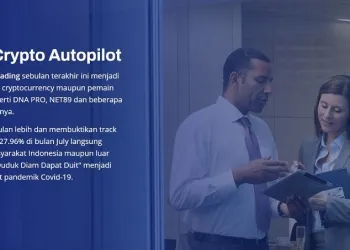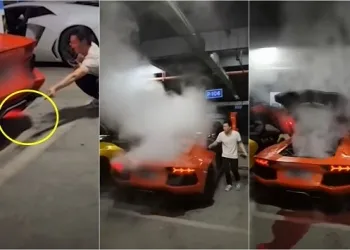Changing Channels In The Automotive Industry
The Future of Automotive Marketing and Distribution. The business of selling cars is changing. New competitive rules will apply. With these changes comes a shift in power.
Who will be the winners and losers in the revolution that is radically reshaping the marketing, distribution and selling of automobiles? Will the vehicle manufacturers and their franchised-dealer networks be able to overcome years of inertia and complacency to pioneer and execute new concepts that will strengthen and extend the value of their brands? Or will nimbler, more imaginative retailers or software companies get there first?
The transformation of the business of selling cars and trucks is happening before our eyes at an incredible pace -- promising to change forever an industry that has long been noted for its high costs, poor service and extremely unpleasant selling process. Auto manufacturers have competed fiercely among themselves to drive out cost and meet consumer needs for cheaper and better cars and trucks. Now the survivors face new threats from outside the industry that might thwart their renewed interest in building strong, lasting relationships with their customers.
Entrepreneurs have dissected the cost-value equation and come up with new retail concepts. Their stories have been persuasive enough to attract hundreds of millions of dollars in public equity investment and persuade dozens of fiercely independent car dealers to sell out. Internet technology has lowered entry barriers for other entrepreneurs with new ideas about helping customers find, evaluate and buy new vehicles. These patterns are consistent with revolutions in other consumer durables markets that effectively transferred market power from manufacturers to retailers.
In response, vehicle manufacturers finally are getting serious about marketing, and about confronting the weaknesses embedded in their traditional franchised-dealer distribution channels. The manufacturers want to expand their participation in the customer life-cycle value chain to improve profitability and grow in markets that have been largely stagnant. This changes the basis of competition from designing and making good products to providing services and managing consumer purchase and ownership experiences for which the products themselves are only partly responsible.
Consumers are the only clear winners in this battle. While we are not sure which vehicle manufacturers will survive, we are confident that winning will require a better understanding of the life-cycle value equations of both cars and buyers, and the development of innovative strategies to capture that value.
Force of Change
From the days of Henry Ford's production line, the automobile industry has been based on a "supply-push" philosophy -- a strong bias toward "filling the factories" to cover high fixed costs.
Dealer networks were created as logical extensions of the "supply-push" model. The networks were designed to hold inventory, leverage private capital (without threatening the manufacturers' control) and service and support what was then a less reliable and more maintenance-intensive product. Those networks generally were built around entrepreneurs focused on a defined geographic area, selling one or at most two brands.
This distribution model has been remarkably resistant to change. Historically, dealer networks have become ingrained and protected over time by a web of habits, contracts, regulations and laws. In the United States, state franchise laws limit the manufacturers' ability to act unilaterally to revoke or consolidate franchises. In Europe, strong national distribution laws and other rules help protect the established channel. Even the new dealer networks created by the Saturn division of the General Motors Corporation and the Lexus division of the Toyota Motor Corporation with such fanfare during the past decade or so have accepted the fundamental model. They have achieved their superiority in channel-driven customer service by avoiding mistakes (such as locating too many dealers too close together) and institutionalizing best practices in customer care.
Despite its longevity, the traditional dealer channel leaves many people unhappy. High customer acquisition costs motivate dealers to convert store traffic to sales using aggressive tactics that extract differential margins based on customers' willingness to pay. Frequent well-publicized rebates have taught buyers to mistrust sticker prices and negotiate from cost up, rather than sticker down. As a result, dealers often find themselves competing not against another brand, but against a same-make dealer across town. This acute competition has almost bid away dealer profit on the sale of new passenger cars in the United States (with some profits still available on sales of trucks, sport utility vehicles and luxury cars).
Shrinking dealer margins do not translate into happy customers: Most customers (approximately four out of five) dislike the purchase process, and many still come away feeling cheated and mistreated. This strong antipathy is largely responsible for the rapid growth of Internet-based services that offer alternative means of gathering information on cars, soliciting price quotes and, in some cases, conducting transactions.
The decline in profits on new cars has forced dealers to make up the shortfall by looking at what many have historically considered "filler" businesses: parts and service, used cars, financing and insurance, and fieets. The problem is that a conventional dealership is not necessarily positioned well to conduct all of these businesses because of their different economics, bases of competition and consumer purchasing patterns. Some dealers, for example, have set up dedicated bays to offer no-appointment quick-lube services to compete with independent outfits such as the Pennzoil Company's Jiffy Lube and the Midas International Corporation's muffier shops. However, the optimal retail density and overhead structure for the oil-change business are very different from those for new cars. (See Exhibit I.) Brick-and-mortar and real estate constraints will make it difficult for traditional dealers to develop truly competitive offerings in each individual dealer business even if they manage to overcome longstanding consumer mistrust.
Surfing the Net for Profits
Obviously the Internet is a major enabler of change in auto distribution. Many of the most important auto industry innovators today are developing Web-based services, leading some to predict that the most important automotive company of the next century will be a software-based company. Republic Industries, for instance, expects sales to reach $1 billion on the World Wide Web by the year 2000. Estimates vary, but some studies have shown that with some cars, as many as 40 percent of customers gather information from the Internet. A smaller but growing percentage of customers demonstrate what is called shopping behavior, or soliciting price quotations and availability information prior to the actual purchase.
The dramatic growth and power of Internet technology have greatly reduced the cost of obtaining information on features, price and availability. Consequently, customers are better equipped to extract what they want from dealerships. One of the pioneers of Internet marketing, Autobytel.com Inc., is working to speed response time from its participating dealers because it has learned that a staggeringly high proportion of its customers -- 64 percent -- buy within 24 hours of using its service to get price and availability quotes. The Internet offers new and better ways to perform many sales and marketing functions and makes it possible for manufacturers to have more and richer two-way communications directly with consumers. It has also provided, for the first time, the capability for channel marketing on a national or even international scale, attacking further the value of the traditional, geographically defined channel.
Dealers Still Part of Equation
No one is suggesting, though, that auto dealers will disappear. Ironically, changes in cars and trucks themselves are making dealers more important. Consumers have more choices of brands and models than ever before. Improved durability and reliability and faster design cycles have narrowed the differences among competing products in the same category. Brand loyalty increasingly derives not from the product itself but from the total purchase and ownership experience. Numerous studies show that customer satisfaction has become a much more critical competitive differentiator and a greater infiuence on repurchase loyalty than the car itself. And it is the dealer that controls these levers today. (See Exhibit II.) This explains the intense efforts many vehicle manufacturers have made to set standards for, measure and even base some dealer compensation on customer satisfaction scores.
As a result of the high-cost, low-satisfaction proposition provided by the traditional dealer channel in general, many players have recently moved to capitalize on opportunities afforded by improving the channel-value equation. Entrepreneurs with access to public capital have strategic designs to modernize auto distribution. Six dealer groups in the United States went public in 1996-7. Collectively they soared past the $4 billion mark in revenue in 1997, up by more than 30 percent from 1996, with most of the growth coming from additional acquisitions of existing dealers.
The most prominent new automotive industry entrepreneur in the United States is H. Wayne Huizenga, chairman of Republic Industries. Mr. Huizenga has a proven track record as an innovator who has revolutionized the waste disposal and video rental industries. Republic owns the nation's largest group of franchised automotive dealerships, operates the AutoNation USA used-vehicle megastore chain and owns and operates several car rental businesses. Republic is currently on an extraordinary acquisition campaign for new-car business dealerships. Even though Republic has almost single-handedly doubled the market price for dealerships, it does not appear to be slowing down.
Unlike the dealership consolidators that are trying to reduce costs through scale economies in administration, advertising and service, Republic's stated strategy is to manage actively the vehicle life cycle while developing a proprietary channel brand. Another example of a company involved in external channel evolution is G.E. Capital Services, an extremely accomplished innovator. It has purchased Autobytel.com and is moving into used-car leasing.
In the face of all these changes, manufacturers have not been idle. Most have stepped up their efforts to improve their distribution systems. Almost every manufacturer has made some effort to restructure its network, improve the consumer experience or experiment with new formats. The Ford Motor Company, for instance, has been enlisting dealer support in several metropolitan markets in the United States and Britain to sell out or pool their interests in new ventures that will feature multi-line showrooms; centralized body and repair shops, and distributed quick-service maintenance facilities. Sweden's Volvo AB is taking a more radical approach: It is testing factory-direct sales over the Internet in Belgium.
Nonetheless, manufacturers seem to be following, not leading, the revolution. Many are still being pushed or kicked along the path of change. There are real questions whether their late -- and in some cases half-hearted -- responses will be enough to protect the traditional position of the vehicle manufacturer as the caller of shots in the auto industry.
Vision for the Future
Now that we see serious cracks in the walls protecting the traditional automotive distribution model, what will the future bring? Both the underlying drivers of change in automotive retailing and the trends already under way help answer that question. In addition, it is helpful to compare the automobile industry with other industries that have experienced distribution-channel evolution and look at the lessons they learned.
Most consumer-durable industries have undergone substantial distribution-channel evolution resulting from changes in economics, regulations or technologies. Each one has unique circumstances, but we can see three relatively common, distinct stages in these channel restructurings:
Stage One: This is marked by major improvements in value delivered, mostly reductions in cost. Usually the cost reductions stem from consolidation and rationalization in the channel as better concepts or bigger players drive out marginal or small players. The bigger players use their cost advantage to reduce prices and often to improve service, variety and convenience.
Stage Two: Here channel evolution is focused on meeting the needs of specific customer segments. Channel functions are unbundled and restructured into more efficient or more appealing formats for defined groups of customers. Customer value is further enhanced through lower prices, better service or greater variety.
Stage Three: This brings dramatic new paradigms not just for distribution but for the entire value chain. Full-service leasing ("power by the hour") in the heavy-duty-truck market is an example of this type of game-changing concept.
We anticipate five major changes in future automobile distribution patterns and practices:
- Multiple channels and formats will coexist to satisfy different market segments. Channels are distinct paths between a manufacturer and a customer through similar economic entities (in new car sales, for example, traditional dealers vs. factory-direct Internet sales or a multi-brand discount outlet). Formats are distinct combinations of points of sale, service offerings and business processes within a general channel definition (for example, the Lexus format versus the Chevrolet format). We expect much more variation in channels and formats in a physical sense and more distinct positionings in terms of the purchase and ownership experience they provide, further shifting the basis of competition from product to services and brand attributes.
- The six separate businesses under the roof of the traditional dealership will be unbundled. The integrated model -- new-car sales, used-vehicle sales, finance and insurance, service, parts, fieets -- was established early on when automobile retailing was still a new industry. In today's world it makes little sense. Different operational structures will be required to serve a variety of customer needs and economics.
- The cost of distributing and marketing automobiles will be cut significantly. New formats and channels will discipline the current system to drive out non-value-adding cost. Dealer consolidations may unlock substantial economies of scale in back-office functions and purchasing leverage. Much larger savings are possible, however, by driving out inventory; reducing investment in brick-and-mortar and real estate investments, and optimizing the delivery of services.
- Marketing and distribution will concentrate on establishing durable customer relationships. Customer acquisition costs are high and going higher; it is logical for manufacturers and their channels to work harder to hold on to the customers they have. We see these relationships developing on two axes: "follow the car" and "follow the customer."
The "follow the car" axis will take manufacturers more actively into the second and third transactions in a vehicle's lifetime. Used-car certification programs are a "follow the car" concept increasing in popularity today as a means of supporting initial sale prices.
The "follow the customer" axis means building more direct relationships with a targeted set of customers to define their needs, develop tailored marketing programs and stake out unique brand positions. Identifying these customers and keeping them happy will require substantial investments in market-understanding capabilities that go far beyond the functional, demographic and pyschographic information that most manufacturers study today.
- Manufacturers will seek and attain much closer contacts with consumers. We have no doubt that someone will figure out the riddle of consumers' needs, aspirations and experiences as they relate to cars; the tenuous part of this prediction is that manufacturers, and not other channel players, will get there first. Manufacturers are surprisingly -- if not shockingly -- cut off from their consumers today. Their dealer partners spend much of their energy figuring out ways to disguise the product-push allocation system in a way that conceals true market demand from the manufacturer. Manufacturers spend small fortunes on advertising, sponsorships, customer clinics and surveys but continue to introduce market duds.
Internet technology enables more effective and efficient direct contact between manufacturers and their ultimate customers. If, however, manufacturers fail to exploit this and other technologies to establish meaningful relationships with consumers, more powerful channel intermediaries will gain the upper hand and end up dictating customer needs to their suppliers -- the manufacturers.
These transformations will not be easy, and many of today's players will fight them aggressively. But the revolution in automotive retailing has begun, and now that it is under way it will be impossible to stop and nearly as difficult to contain.
Forming a Strategic Response
Given this view of the future, what should a manufacturer or major channel player do? Appropriate responses are to some extent situation-dependent, of course, but we believe the three stages of channel evolution observed in other industries provide valuable insight into what is and will be required to prevail in the automotive industry.
In fact, first-stage channel evolution activities are rampant in automobile retailing in the United States and Europe, and second-stage changes have begun to emerge for used cars. We expect that participants who fall behind in this evolutionary process will suffer severely, particularly as more and more of the value creation and differentiation in the industry occurs downstream. The future winners in the automobile industry likely will be the ones that drive third-stage evolution.
Accordingly, we recommend the following strategic responses consistent with the three stages of channel evolution and the future automotive distribution vision described above:
- Aggressively and systematically pursue functional improvement beyond the factory gate. The most prominent opportunity is cost.
- Develop a vision of a desired end-game distribution channel strategy and begin making progress toward that vision, taking care to achieve consistency between the long-term vision and short-term functional improvement agendas.
- Build the means to create and capture much more of the "downstream" value associated with the automobile -- and, in so doing, strive to innovate "game-changing" approaches to the business.
Functional Improvements
In the conventional dealer networks, tremendous improvement opportunities exist along two basic functional paths: reducing costs and raising customer satisfaction. Most manufacturers and many large channel players are jumping at these opportunities, given their magnitude. However, these players tend to select a limited number of programs, and they typically concentrate on single functional improvements independently or on a single functional path.
A better approach is to address systematically the whole realm of possibilities with an integrated view of benefits within and across specific functions. This is not easy. Even programs with moderate scope and ambition typically require reforming entrenched business philosophies; coordinating several organizational groups with disparate incentives; managing complex and imposing legalities, and facing up to dealers resistant to change. But manufacturers must recognize that new players unencumbered by these constraints are raising the bar and traditional players must reach higher or fall behind.
Based on our experiences and analyses, we estimate that about 7 percent of the total cost to serve consumers, or nearly one-quarter of automotive marketing and distribution costs, can be reduced based on a typical traditional dealer operation. (See Exhibit IV.) The cost reductions derive from three sources:
- The consolidation and rationalization of channel activities to achieve economies of scale and eliminate inefficient operations. Large numbers of small competing dealerships impose significant cost penalties.
- The unbundling of dealer businesses, for instance used-car selling, to optimize the operating model for a specific business.
- The application of best practices across outlets. Given the wide variation and the resulting large differences in efficiency and effectiveness in operations among dealers, the application of best practices is a powerful cost-reduction lever.
Here are some examples of potential functional improvements:
Reduce inventory costs. Dealers can cooperate among themselves and with the manufacturers to pool inventory in regional centers. Also, analytical methodologies, information- systems tools and best practices can be used to evaluate the dealer-level sales history to determine the best amount and mix of vehicles, including option packages, to hold in inventory. Finally, to improve future demand visibility and forecasting accuracy, dealers can use improved information systems and marketing techniques to track customer and sales-promotion information, lease-renewal marketing campaigns and historical data on sales-promotion effectiveness.
Leverage purchasing power. Dealers can also capitalize on economies of scale. The economies result from lower costs in areas such as financing, advertising, management personnel, payroll handling, insurance, supplies, administrative functions and parts purchases. The reported cost savings from these economies alone can be as high as 20 percent of a dealer's total costs. B.B. Hollingsworth Jr., chairman of Group 1 Automotive Inc., one of the leading consolidators in the country, says that his company has "discovered more economies-of-scale savings than [it] initially expected."
Manage used-car values. Most manufacturers today have some sort of certified used-car program, although the programs vary in effectiveness. These programs are critical to managing the risk of large losses from infiated lease residuals that have become commonplace, and to minimizing the huge cost of incentives.
There is a direct link between the value of the used car and new car prices for the same model. In one case for two comparable high-end sedans, we found a difference of 8 percent in the used-car price between the make with a certified used-car program and the one without, despite the fact that they were priced the same when new. This used-car relative discount was then refiected directly in the new-car pricing differential between the two models in subsequent years.
Unbundle used-car sales. A large-scale operation designed specifically for used cars can achieve efficiencies relative to the conventional dealer's used-car format. These include economies of scale in areas such as advertising, management, personnel, facilities and systems. In addition, there is the obvious savings of a lower-cost location. Joint ownership and operation by dealers and manufacturers can make an unbundled used-car operation plausible for existing franchised dealers.
Use best practices to sell cars. The traditional selling approach for new cars is replete with cost (and effectiveness) opportunities. The car-buying process entails six successive phases: continuous, subconscious information intake; active, focused information collection; test driving; vehicle selection; purchase/negotiation, and post-purchase support. Manufacturers and dealers typically use expensive shotgun approaches to these phases; alternative, more cost-effective information exchange mechanisms are available for each.
































